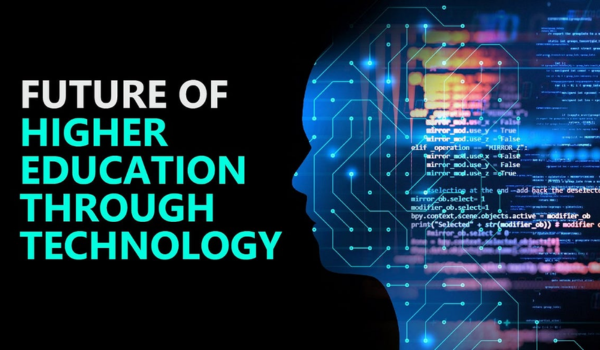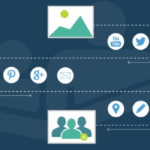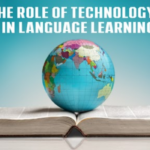Introduction
A brief introduction to the rise of educational technology (EdTech)
Start with a compelling introduction about how technology is increasingly becoming integral to education. Highlight the rapid advancements in EdTech and their transformative impact on learning environments.
Overview of the transformative impact of EdTech on learning environments
Provide a general overview of how EdTech is changing traditional education models, making learning more interactive, accessible, and personalized.
Section 1: Current Trends in Educational Technology
Overview of current EdTech trends (e.g., AI, VR/AR, gamification)
Discuss the most significant trends in EdTech, such as Artificial Intelligence (AI), Virtual Reality (VR), Augmented Reality (AR), and gamification. Explain each trend briefly.
Discussion on how these trends are being integrated into classrooms
Provide examples of how these technologies are being implemented in real classrooms, enhancing teaching and learning experiences.
Examples of schools or institutions adopting these technologies
Highlight specific case studies or success stories of schools and institutions that have successfully integrated these EdTech trends.
Section 2: Personalized Learning
Explanation of personalized learning and its importance
Define personalized learning and explain why it is crucial for student engagement and success. Emphasize the shift from one-size-fits-all to tailored educational experiences.
Role of EdTech in creating personalized learning experiences
Discuss how technologies like AI and learning management systems (LMS) can customize lessons to meet individual student needs, preferences, and learning speeds.
Case studies of successful personalized learning implementations
Provide real-world examples of schools or programs that have effectively used EdTech to implement personalized learning, showcasing the positive outcomes.
Section 3: Enhancing Accessibility and Inclusion
How EdTech is making education more accessible to students with disabilities
Explain the role of EdTech in making education accessible to all, including students with disabilities. Mention tools like screen readers, speech-to-text software, and adaptive learning technologies.
Tools and technologies that support inclusive education
List specific EdTech tools and platforms that promote inclusion, such as learning apps designed for students with special needs or platforms that offer multiple languages.
Examples of inclusive practices and their impact on students
Highlight examples of inclusive educational practices supported by EdTech and discuss their positive impact on student learning and engagement.
Section 4: Remote and Blended Learning
Growth of remote learning and the role of EdTech
Discuss the increase in remote learning, especially accelerated by the COVID-19 pandemic, and the critical role of EdTech in facilitating this shift.
Benefits and challenges of blended learning environments
Explain the concept of blended learning, which combines online and face-to-face instruction. Discuss the benefits, such as flexibility and increased student engagement, as well as the challenges, like ensuring access to technology and maintaining student motivation.
Strategies for effectively integrating EdTech in remote and blended learning
Offer practical strategies for educators to integrate EdTech effectively in blended and remote learning environments, ensuring students remain engaged and achieve learning outcomes.
Section 5: Interactive and Engaging Learning Experiences
Use of interactive tools (e.g., smartboards, educational apps) to enhance engagement
Describe how interactive tools like smartboards, educational technology apps, and interactive websites can make learning more engaging and participatory.
Benefits of gamification and simulation-based learning
Explain how gamification (using game design elements in education) and simulation-based learning (using simulations to replicate real-world scenarios) can enhance student motivation and understanding.
Examples of interactive EdTech tools and their effectiveness
Provide examples of specific interactive tools and apps, discussing their features and how they have been effective in improving student engagement and learning outcomes.
Section 6: Data-Driven Decision Making
Importance of data analytics in education
Explain the importance of using data analytics to make informed decisions in education. Discuss how data can provide insights into student performance, helping educators tailor their teaching strategies.
How EdTech tools provide insights into student performance and learning patterns
Discuss specific EdTech tools that collect and analyze data on student performance, such as LMS and educational software. Explain how these insights can help educators identify learning gaps and adjust their teaching methods.
Examples of data-driven decision-making improving educational outcomes
Highlight case studies or examples where data-driven decision-making has led to improved educational technology outcomes, such as higher student achievement or better retention rates.
Section 7: Preparing Students for the Future
Role of EdTech in developing 21st-century skills (e.g., critical thinking, collaboration)
Discuss the importance of 21st-century skills like critical thinking, collaboration, and digital literacy. Explain how EdTech helps students develop these skills through interactive and collaborative platforms.
How EdTech prepares students for future careers and lifelong learning
Explain how EdTech equips students with the skills and knowledge needed for future careers and promotes lifelong learning. Mention tools that teach coding, digital literacy, and other job-relevant skills.
Examples of EdTech programs focused on skill development
Provide examples of specific EdTech programs or initiatives that focus on developing these crucial skills, discussing their approach and impact on students.
Conclusion
Recap of how EdTech is shaping the future of learning
Summarize the key points discussed in the blog post, emphasizing the transformative impact of EdTech on education.
Final thoughts on the potential of EdTech to revolutionize education
Offer final thoughts on the potential of EdTech to revolutionize education, making it more accessible, engaging, and effective.
Encouragement for educators, parents, and policymakers to embrace EdTech
Encourage stakeholders, including educators, parents, and policymakers, to embrace EdTech and support its integration into educational systems to enhance learning experiences for all students.















